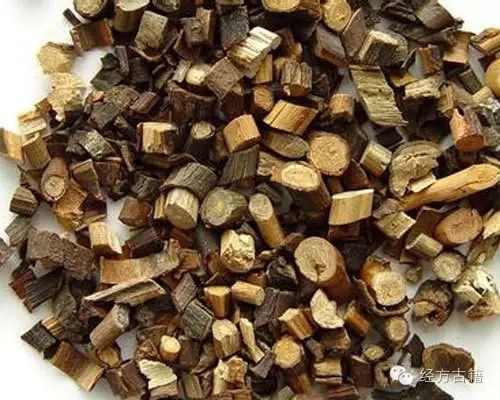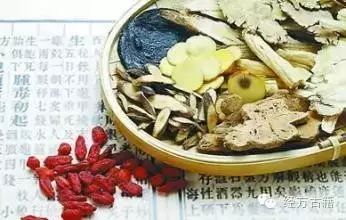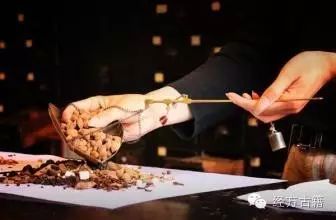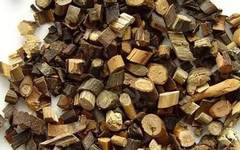Click the above “Public Account” to subscribe! Ancient texts on classical formulas tell classic stories… The 《Shang Han Lun》 (Treatise on Cold Damage) written by Zhang Zhongjing in the Eastern Han Dynasty creatively summarizes the complex symptoms and their evolution of exogenous diseases, proposing three treatment principles of exterior and interior priority, providing a universal rule for later TCM practitioners in clinical work. The author shares a superficial understanding of these treatment principles based on exterior and interior priority during the learning and practice process.
The so-called exterior and interior priority refers to the treatment principles established based on the depth of the disease location and the urgency of the disease process. When the evil is in the meridians and muscle surface, it is called an exterior syndrome; when the evil involves the internal organs, it is called an interior syndrome. Generally speaking, for a Taiyang (Greater Yang) exterior syndrome, it is advisable to release the exterior and induce sweating; for a Yangming (Bright Yang) interior syndrome, it is advisable to clear and drain interior heat or purge interior excess; for a Shaoyang (Lesser Yang) syndrome that is half exterior and half interior, it is advisable to harmonize Shaoyang; for a Sanyin (Three Yin) interior deficiency cold syndrome, it is necessary to warm and tonify Yang Qi. However, sometimes when clinical manifestations are ambiguous between exterior and interior syndromes or when both exterior and interior diseases are present, determining the treatment principles becomes particularly critical. Zhang Zhongjing’s three principles of exterior and interior priority—first exterior then interior, first interior then exterior, and simultaneous treatment of exterior and interior—arise from this.
1. Exterior disease with interior excess should prioritize exterior treatment (1) Clinically, whenever there are symptoms of fever, chills, body aches, and a floating pulse indicating an exterior syndrome, along with an interior syndrome of constipation, if the interior evil is not severe, the exterior symptoms should be treated first. Only after the exterior evil is resolved and the interior Qi is obstructed can it be purged. For example, in case 36: “When Taiyang and Yangming are combined, if there is wheezing and fullness in the chest, it is not advisable to purge; it is better to use Mahuang Decoction. If there is initial exposure to wind-cold with an interior syndrome of constipation, purging methods should not be used. Instead, use Mahuang Decoction to release the exterior and disperse the lung; once the exterior evil is resolved, the interior Qi will harmonize, and bowel movements will occur naturally.” Also, in case 48: “When both Yang diseases are present, if the Taiyang disease has just begun, induce sweating; if the sweat does not fully emerge and then it turns into Yangming, continue to induce slight sweating without chills. If the Taiyang disease does not cease, purging is not advisable; purging at this stage is counterproductive. Thus, slight sweating is permissible… Although the exterior evil has transmitted to the interior, the exterior should be treated first before addressing the interior.” Similar references can be found in cases 234, 235, and 217. “In cases of Cold Damage, many are caused by wind-cold. When the wind-cold enters the interior, it does not dissipate. If there is no warming and covering, it will not disperse. It is not appropriate to attack it without first resolving the exterior. If the exterior is not resolved and the interior does not dissipate, unless there is significant fullness or cold-heat, purging is not advisable. If the exterior has been resolved but the interior is not clear, significant fullness, hard abdomen, and dry stool can be purged.” (From the 《Shang Han Za Bing Lun Hui Tong》)
(2) If there is an exogenous wind evil causing water retention, and the fluid evil is lodged beneath the ribs, Zhang Zhongjing points out that only after resolving the exterior can one attack. If one attacks before resolving the exterior, the exterior evil will further penetrate and cause other changes (case 152).
(3) If the Taiyang exterior evil is unresolved and penetrates into the bowels, causing heat and blood to congeal in the lower abdomen, leading to blood stasis symptoms, the treatment should use methods to expel stasis. However, if the exterior syndrome has not been resolved, one should not first attack the interior. Because when both exterior and interior diseases are present, resolving the exterior first is a principle of the Treatise on Cold Damage. As stated in the 《Nei Jing》: “When the exterior is strong and the interior is abundant, treat the exterior first and then the interior.”
(4) If the exterior syndrome of Cold Damage has not been resolved and there is cold in the exterior with heat in the interior, one should not use clearing heat methods. The exterior should be resolved first, and then the interior can be cleared. If heat is cleared too early, it may hinder the exterior evil from being expelled, leading to a delay in the disease process (case 170).
Zhang Zhongjing lists various specific manifestations of exterior disease with interior excess in the text, and in case 44, he states that if the exterior symptoms of Taiyang disease are unresolved, purging is not advisable; purging at this stage is counterproductive… If this principle is followed, it can prevent the transmission of exterior symptoms to the interior, avoiding exacerbation of interior excess. If this principle is not adhered to, the distinction between exterior and interior is lost, and inappropriate sweating and purging can lead to unresolved interior symptoms, causing the exterior evil to penetrate and result in symptoms such as chest fullness, distension, diarrhea, wheezing, rapid pulse, chest fullness, and even loss of Yang and collapse. Therefore, it is said that “purging in Cold Damage should not be rushed” is a summary of experience. If the exterior symptoms have been mismanaged but still persist, the exterior evil should still be resolved first. If the Taiyang disease has undergone sweating, purging, and warming needle treatment but the exterior evil has not changed, it indicates that the Zheng Qi (Vital Qi) is still strong, and treatment should still focus on resolving the exterior. If there are still external signs after mismanagement, such as rapid pulse, flushed face, body itching, resembling a daily recurrence of malaria, with a large pulse, the person is agitated and does not know where the pain is, sometimes in the abdomen, sometimes in the limbs, and pressing does not yield results, along with chills and a floating pulse, it indicates that the Zheng Qi still has a tendency to resist the exterior evil, and treatment should follow this trend (cases 21, 23, 25, 34, 43, 45, 164).
First exterior then interior is one of the general treatment principles for simultaneous exterior and interior diseases. However, in special circumstances where the interior excess is severe and the condition is urgent, even if the exterior symptoms are unresolved, one may first attack the interior. As discussed in the text: If the Taiyang disease persists for six or seven days, and the exterior symptoms remain, with a weak and deep pulse, but no chest fullness, and the person is delirious, it indicates that heat is in the lower abdomen, which is hard and full, and urination is frequent; purging blood will lead to recovery. This is because the Taiyang disease is accompanied by stasis heat in the interior, as indicated by the use of the Di Dang Decoction. If the Taiyang disease has already shown signs of delirium, it indicates a more severe condition of blood stasis. Even if there are Taiyang exterior symptoms, one should use methods to expel stasis, which is a temporary measure for treating interior excess with exterior disease. For interior excess with exterior disease, in urgent cases, one should prioritize the interior before addressing the exterior; thus, treatment should be to purge first and then induce sweating, based on the urgency of the exterior and interior.
 2. Exterior disease with interior deficiency should prioritize warming the interior, then attacking the exterior Regardless of whether it is a constitutionally Yang-deficient person who is affected by an external evil, or a person who has been mismanaged and has Yang Qi in the lower jiao (lower abdomen) deficient and combined with exterior evil, leading to a more obvious deficiency of Zheng Qi, such as diarrhea with clear stools and urgency in the lower abdomen, treatment should prioritize warming the interior. In case 91, after mismanagement of Cold Damage, diarrhea with clear stools and a deep pulse appeared, indicating kidney Yang deficiency, but the exterior symptoms remained with body aches, fever, and chills. Although the exterior symptoms have not been resolved, rescuing the interior and tonifying Yang is urgent, while the exterior symptoms are less urgent. Therefore, warming the interior and tonifying Yang can also disperse the exterior evil without causing it to penetrate inward. If there is a combination of Shaoyang and middle jiao deficiency cold abdominal pain, it is advisable to first take Xiao Jian Zhong Decoction to stabilize the middle and alleviate urgency. After taking the medicine, if the interior deficiency is restored but the Shaoyang disease is not resolved, then consider taking Xiao Chai Hu Decoction to disperse the evil and harmonize the exterior and interior, which means to first tonify and then harmonize (case 100). The above text fully illustrates that when there is an exterior disease with interior deficiency, and the interior deficiency is urgent, the interior must be rescued first. Only after the Zheng Qi is restored can sweating and resolving the exterior be used. If one does not first consider the interior deficiency and rashly uses methods to resolve the exterior, not only will the Yang Qi be insufficient to expel the exterior evil, but it may also further damage the Yang Qi, increase the cold Yin, and lead to obstruction of the turbid Yin, inevitably resulting in abdominal distension and other symptoms of deficiency.
2. Exterior disease with interior deficiency should prioritize warming the interior, then attacking the exterior Regardless of whether it is a constitutionally Yang-deficient person who is affected by an external evil, or a person who has been mismanaged and has Yang Qi in the lower jiao (lower abdomen) deficient and combined with exterior evil, leading to a more obvious deficiency of Zheng Qi, such as diarrhea with clear stools and urgency in the lower abdomen, treatment should prioritize warming the interior. In case 91, after mismanagement of Cold Damage, diarrhea with clear stools and a deep pulse appeared, indicating kidney Yang deficiency, but the exterior symptoms remained with body aches, fever, and chills. Although the exterior symptoms have not been resolved, rescuing the interior and tonifying Yang is urgent, while the exterior symptoms are less urgent. Therefore, warming the interior and tonifying Yang can also disperse the exterior evil without causing it to penetrate inward. If there is a combination of Shaoyang and middle jiao deficiency cold abdominal pain, it is advisable to first take Xiao Jian Zhong Decoction to stabilize the middle and alleviate urgency. After taking the medicine, if the interior deficiency is restored but the Shaoyang disease is not resolved, then consider taking Xiao Chai Hu Decoction to disperse the evil and harmonize the exterior and interior, which means to first tonify and then harmonize (case 100). The above text fully illustrates that when there is an exterior disease with interior deficiency, and the interior deficiency is urgent, the interior must be rescued first. Only after the Zheng Qi is restored can sweating and resolving the exterior be used. If one does not first consider the interior deficiency and rashly uses methods to resolve the exterior, not only will the Yang Qi be insufficient to expel the exterior evil, but it may also further damage the Yang Qi, increase the cold Yin, and lead to obstruction of the turbid Yin, inevitably resulting in abdominal distension and other symptoms of deficiency. 3. Simultaneous exterior and interior diseases, with equal strength of Zheng Qi and evil, should be treated simultaneously 3.1 When exterior disease is combined with interior excess, the main treatment should focus on resolving the exterior, supplemented by clearing or purging. The interior excess refers to the simultaneous resolution of both exterior and interior. When Taiyang disease is unresolved and combined with interior heat causing irritability, internal water retention leading to cough and wheezing, and abdominal fullness with pain from Taiyin disease, as well as the combination of food retention causing abdominal fullness and pain with Taiyang and Shaoyang disease, these are all simultaneous exterior and interior diseases. If the Zheng Qi is not severely deficient and the evil is not too strong, treatment needs to consider both. For example, if the exterior evil is obstructing the interior heat, it is advisable to use Da Qing Long Decoction to release the exterior and clear the interior; if the exterior evil has penetrated Taiyin causing abdominal fullness and pain, one can use Gui Zhi Jia Shao Yao Decoction to resolve the exterior and support the spleen; if the exterior syndrome is combined with food retention causing interior excess and pain, one should use Gui Zhi Jia Da Huang Decoction to resolve the exterior and purge; if there is internal water retention and external evil, Xiao Qing Long Decoction can be used to warm and transform the water and resolve the exterior; if the Tai Shao and Er Jing diseases are not too severe, Chai Hu Gui Zhi Decoction can be used to resolve the evils of both channels.
3. Simultaneous exterior and interior diseases, with equal strength of Zheng Qi and evil, should be treated simultaneously 3.1 When exterior disease is combined with interior excess, the main treatment should focus on resolving the exterior, supplemented by clearing or purging. The interior excess refers to the simultaneous resolution of both exterior and interior. When Taiyang disease is unresolved and combined with interior heat causing irritability, internal water retention leading to cough and wheezing, and abdominal fullness with pain from Taiyin disease, as well as the combination of food retention causing abdominal fullness and pain with Taiyang and Shaoyang disease, these are all simultaneous exterior and interior diseases. If the Zheng Qi is not severely deficient and the evil is not too strong, treatment needs to consider both. For example, if the exterior evil is obstructing the interior heat, it is advisable to use Da Qing Long Decoction to release the exterior and clear the interior; if the exterior evil has penetrated Taiyin causing abdominal fullness and pain, one can use Gui Zhi Jia Shao Yao Decoction to resolve the exterior and support the spleen; if the exterior syndrome is combined with food retention causing interior excess and pain, one should use Gui Zhi Jia Da Huang Decoction to resolve the exterior and purge; if there is internal water retention and external evil, Xiao Qing Long Decoction can be used to warm and transform the water and resolve the exterior; if the Tai Shao and Er Jing diseases are not too severe, Chai Hu Gui Zhi Decoction can be used to resolve the evils of both channels.
3.2 For simultaneous exterior and interior diseases, treatment should follow the progression of the disease. If the disease is primarily in the exterior, induce sweating; if the disease is primarily in the interior, it is advisable to clear or purge. The disease progression refers to the trend of disease development. In cases of simultaneous Taiyang and Shaoyang diseases, or combined diseases of Taiyang and Yangming, there are often situations where both exterior and interior symptoms are present. This requires careful examination of the symptoms to determine which is more severe, whether the disease is more exterior or more interior, and to consider treatment accordingly. For example, if there are simultaneous Taiyang exterior symptoms and Yangming interior symptoms, with external signs of a floating pulse, fever, stiff neck, chills without sweating, and internal signs of heat in the ribs and diarrhea, with a thin white tongue coating, this indicates that the disease is primarily in the Taiyang, and the exterior evil is unable to leak out, thus pressing down on the large intestine. One can use Ge Gen Decoction to release the muscles and induce sweating, allowing the exterior evil to be expelled, and the diarrhea will stop (case 33).
In cases of simultaneous Shaoyang and Yangming diseases, Shaoyang disease is a half exterior and half interior syndrome, while Yangming disease is an interior syndrome. In the development of Cold Damage, whenever there are Shaoyang symptoms that have not resolved, Yangming symptoms may appear. The treatment principles are similar to those of Taiyang and Yangming; first, attention should be paid to the exterior symptoms, allowing the disease evil to be expelled outward, and it is not advisable to use purging methods too early. For example, in case 228: Yangming disease, with tidal fever, clear stools, frequent urination, and fullness in the chest and ribs that does not resolve… Although there are signs of evil transmitting to Yangming, the interior evil has not yet solidified, and the Shaoyang symptoms have not resolved. Therefore, it is only advisable to use Xiao Chai Hu Decoction to harmonize the exterior and interior, and purging is not advisable. Similarly, in Yangming disease, although there is constipation, if there is hardness and fullness beneath the ribs and vomiting, with a white tongue coating, it is evident that the interior evil has not solidified, and the disease is still in the Shaoyang stage. One can use Xiao Chai Hu Decoction to promote the flow of Qi in the upper jiao, allowing the fluids to circulate, leading to spontaneous bowel movements. If purging is used too early without following the disease progression, the exterior evil will penetrate the interior, leading to solidification. If the evil has just begun to penetrate the interior, it cannot yet be determined as interior excess. At this time, one should examine the pulse to distinguish the urgency of exterior and interior; if the pulse is deep and solid, indicating a focus on interior excess, purging should be prioritized; if the pulse is floating and weak, indicating a focus on exterior symptoms, resolving the exterior should be prioritized (case 240).
3.3 If there is interior deficiency and exterior excess, and the Zheng Qi is not severely deficient, one should tonify the deficiency and drain the excess. If the interior deficiency only presents with symptoms of middle jiao deficiency cold, such as abdominal distension, loose stools, aversion to cold, or a deep, slow, or weak pulse, and after mismanagement, there are symptoms of Qi and blood deficiency with body aches, and the exterior symptoms of fever and chills are present, treatment can consider both exterior and interior. For example, in cases of Taiyang disease, repeated purging has led to unresolved exterior symptoms, but the interior Qi has become deficient, resulting in symptoms of cold diarrhea. In cases where both exterior and interior symptoms are present, treatment should address both. One can use Gui Zhi Decoction to promote circulation and expel Yang outward to resolve the exterior, while using Li Zhong Decoction to support Yang internally to stop diarrhea. Similarly, in cases of simultaneous Taiyang and Shaoyin diseases: when a patient with a constitutionally deficient Yang Qi is affected by an external evil, Taiyang exterior symptoms may appear alongside Shaoyin deficiency cold symptoms, presenting with fever and a deep pulse. At this time, if the interior deficiency is not severe and is combined with exterior excess, the interior should be warmed, and the exterior should be resolved. In cases of Taiyang disease, if sweating leads to body aches and a deep pulse indicating Qi and blood deficiency, and the exterior symptoms remain unresolved, one should not simply resolve the exterior. Instead, use Gui Zhi Xin Jia Decoction to harmonize the Ying and Wei, tonify Qi and Ying to ensure sufficient Qi, and resolve the exterior symptoms. If the Taiyang disease has been over-sweated, leading to Yang Qi deficiency and continuous sweating without resolving the exterior symptoms, Gui Zhi Jia Fu Zi Decoction should be used to secure the exterior, stop sweating, and restore Yang and consolidate fluids. The above cases illustrate that when the exterior is unresolved and the Zheng Qi is not severely deficient, both resolving the exterior and tonifying the deficiency should be employed.
 In summary, the key to the sequence and urgency of treating exterior and interior lies in the strength of the Zheng Qi. When the Zheng Qi is strong and both exterior and interior diseases are present, treatment can be based on specific circumstances, either prioritizing the exterior or resolving both simultaneously. When the Zheng Qi is weak and there is interior deficiency and cold, the interior must be prioritized before addressing the exterior, or treatment should consider both exterior and interior. If one does not examine the relationship between exterior and interior and administer treatment, it is rare to avoid mismanaging the evil and attacking the Zheng Qi, which can disrupt the fundamental principles.
In summary, the key to the sequence and urgency of treating exterior and interior lies in the strength of the Zheng Qi. When the Zheng Qi is strong and both exterior and interior diseases are present, treatment can be based on specific circumstances, either prioritizing the exterior or resolving both simultaneously. When the Zheng Qi is weak and there is interior deficiency and cold, the interior must be prioritized before addressing the exterior, or treatment should consider both exterior and interior. If one does not examine the relationship between exterior and interior and administer treatment, it is rare to avoid mismanaging the evil and attacking the Zheng Qi, which can disrupt the fundamental principles.

